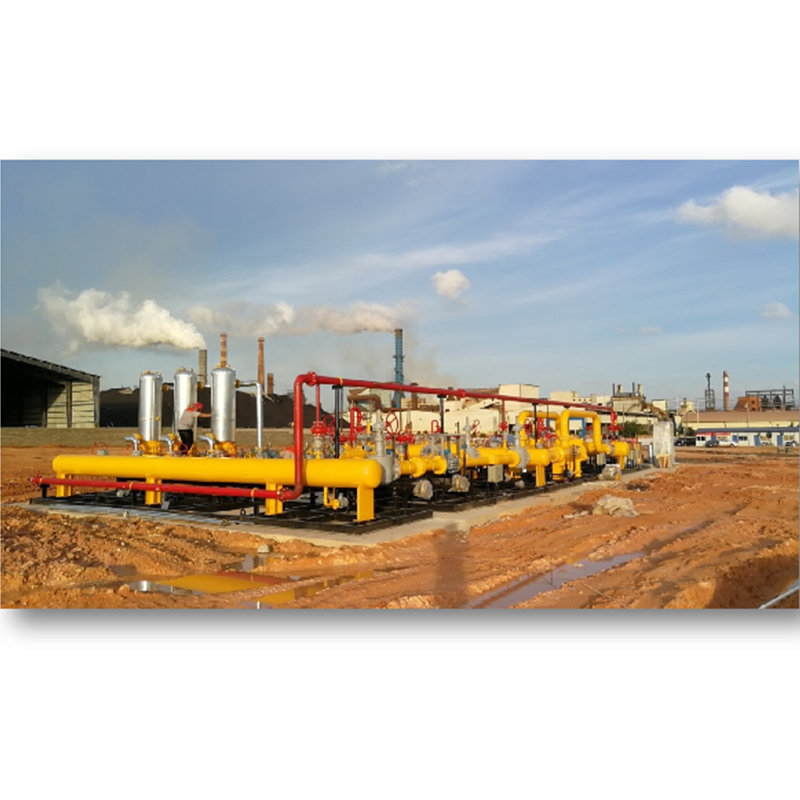
Dec . 04, 2024 04:38
Back to list
Design and Functionality of Pressure Regulation Systems in Industrial Applications
Understanding Pressure Reducing Devices
Pressure reducing devices are essential components in various industrial, commercial, and residential applications where the control of fluid pressure is crucial for safety, performance, and efficiency. These devices play a significant role in maintaining the desired pressure levels, which helps to protect equipment, optimize processes, and ensure safety in operations.
What is a Pressure Reducing Device?
A pressure reducing device, often referred to as a pressure regulator, is engineered to control the pressure of a fluid, typically gas or liquid, within a system. Its primary function is to reduce the high upstream pressure from a supply source, such as a gas cylinder or pipeline, to a lower, manageable level suitable for downstream applications. This is particularly important in systems where excessive pressure could lead to equipment failure, leaks, or even hazardous situations.
How Do They Work?
The workings of a pressure reducing device can vary depending on the specific design and application, but the fundamental principle involves the regulation of pressure through a mechanical mechanism. Generally, these devices consist of an inlet and outlet port, a diaphragm or piston, and a spring.
When fluid enters the device, it exerts pressure on the diaphragm or piston. If the upstream pressure exceeds the preset level, the diaphragm moves against the spring force, reducing the flow area and thereby lowering the pressure. Conversely, if the downstream pressure drops, the spring expands, allowing more fluid to flow through the device, thus maintaining the desired pressure level. This feedback mechanism ensures that the output pressure remains stable despite fluctuations in the upstream supply.
Applications of Pressure Reducing Devices
Pressure reducing devices are widely used in various sectors. In residential settings, they are commonly found in water supply systems to maintain safe and consistent water pressure, preventing damage to plumbing fixtures and appliances. In industrial applications, they are vital for gas distribution systems where maintaining appropriate pressure is essential for safety and efficiency.
pressure reducing device

In the healthcare field, pressure regulators are used in medical gas systems to ensure that gases such as oxygen are delivered at safe pressures to patients. Similarly, in laboratories, these devices are integral in experiments involving pressurized gases, ensuring accurate and stable pressure conditions.
Importance of Pressure Control
The importance of pressure control cannot be overstated. Excessive pressure can lead to equipment damage, increased maintenance costs, and safety hazards, including explosions or toxic leaks. By utilizing pressure reducing devices, organizations can enhance operational safety, extend the life of equipment, and improve the reliability of their processes.
Moreover, pressure regulation is critical for energy efficiency. Many industrial processes depend on specific pressure levels to optimize performance; therefore, maintaining the correct pressure can lead to significant energy savings. For example, in HVAC systems, pressure regulators help maintain optimal airflow, ensuring energy-efficient operation.
Choosing the Right Device
Selecting the appropriate pressure reducing device requires careful consideration of several factors, including the type of fluid (gas or liquid), the pressure range, flow capacity, and the specific application requirements. It is also essential to consider materials compatible with the fluid to avoid corrosion or contamination.
In addition, many modern pressure reducing devices come with advanced features such as adjustable pressure settings, integral filters, and even monitoring capabilities. These options can enhance usability and performance, making it easier to maintain desired pressure levels and respond to system changes.
Conclusion
In conclusion, pressure reducing devices are integral to ensuring safety, efficiency, and reliability across various applications. From residential plumbing to complex industrial processes, these devices help maintain stable pressure levels, protecting equipment and enhancing performance. As technologies evolve, the design and functionality of pressure reducing devices continue to improve, making them more effective and easier to integrate into existing systems. Understanding their significance and operation can help engineers and technicians make informed decisions that promote safety and efficiency in their operations.
Latest news
-
Safety Valve Spring-Loaded Design Overpressure ProtectionNewsJul.25,2025
-
Precision Voltage Regulator AC5 Accuracy Grade PerformanceNewsJul.25,2025
-
Natural Gas Pressure Regulating Skid Industrial Pipeline ApplicationsNewsJul.25,2025
-
Natural Gas Filter Stainless Steel Mesh Element DesignNewsJul.25,2025
-
Gas Pressure Regulator Valve Direct-Acting Spring-Loaded DesignNewsJul.25,2025
-
Decompression Equipment Multi-Stage Heat Exchange System DesignNewsJul.25,2025

